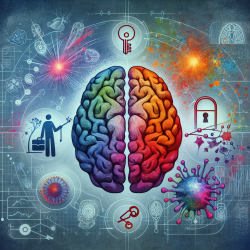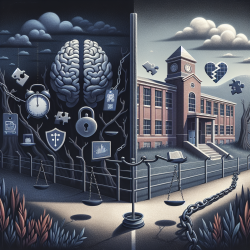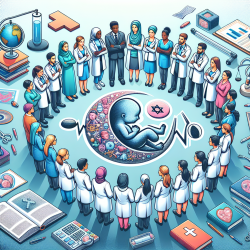Understanding Aphasia and Its Impact
Aphasia, a language disorder often resulting from a stroke, can significantly impact communication abilities. For speech-language pathologists, understanding the underlying mechanisms of aphasia recovery is crucial for developing effective treatment strategies. Recent research has shed light on the role of cortical microstructural changes in facilitating language recovery, offering promising insights for practitioners.
The Study: Linking Brain Changes to Language Recovery
The research article titled "Cortical microstructural changes associated with treated aphasia recovery" explores the hypothesis that language recovery in post-stroke aphasia is associated with structural brain changes. The study employed diffusion MRI sequences, specifically diffusional kurtosis imaging, to assess the relationship between language treatment response and cortical changes in 26 individuals with chronic stroke-induced aphasia.
Key Findings: Brain Regions and Language Improvement
The study found that improved naming accuracy, as measured by the Philadelphia Naming Test, was statistically associated with increased post-treatment microstructural integrity in the left posterior superior temporal gyrus. Furthermore, increased microstructural integrity in the left middle temporal gyrus and left inferior temporal gyrus was linked to a decrease in semantic paraphasias. These findings highlight the importance of specific brain regions in supporting language recovery.
Implications for Practitioners
For speech-language pathologists, these findings underscore the significance of targeted therapy that promotes neuroplasticity in specific brain regions. Here are some practical steps practitioners can take:
- Focus on Naming Tasks: Incorporate naming exercises that challenge the left posterior superior temporal gyrus, as improvements in this area are linked to better naming accuracy.
- Reduce Semantic Paraphasias: Design activities that engage the left middle and inferior temporal gyri to decrease semantic errors.
- Monitor Progress with Imaging: Collaborate with neurologists to use advanced imaging techniques, like diffusional kurtosis imaging, to monitor cortical changes and adjust treatment plans accordingly.
Encouraging Further Research
While this study provides valuable insights, it also opens avenues for further research. Practitioners are encouraged to explore the following areas:
- Longitudinal Studies: Conduct studies that track brain changes over extended periods to understand the long-term effects of therapy.
- Comparative Analysis: Compare the effectiveness of different therapeutic approaches in inducing cortical changes.
- Integration of Technology: Investigate the role of technology, such as virtual reality or AI, in enhancing therapy outcomes.
Conclusion
The study on cortical microstructural changes provides a compelling case for the role of brain plasticity in aphasia recovery. By focusing on specific brain regions and utilizing advanced imaging techniques, practitioners can enhance treatment outcomes for individuals with aphasia. As we continue to unravel the complexities of the brain, ongoing research and innovation will be key to unlocking new possibilities in language recovery.
To read the original research paper, please follow this link: Cortical microstructural changes associated with treated aphasia recovery.










